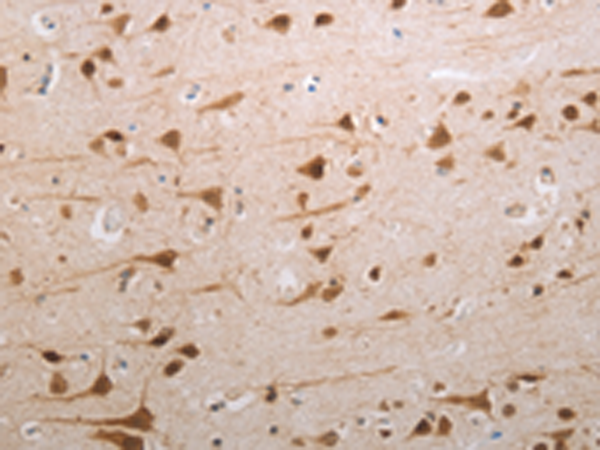
| WB | 咨询技术 | Human,Mouse,Rat |
| IF | 咨询技术 | Human,Mouse,Rat |
| IHC | 1/100-1/300 | Human,Mouse,Rat |
| ICC | 技术咨询 | Human,Mouse,Rat |
| FCM | 咨询技术 | Human,Mouse,Rat |
| Elisa | 1/2000-1/10000 | Human,Mouse,Rat |
| Aliases | NFBD1 |
| Host/Isotype | Rabbit IgG |
| Antibody Type | Primary antibody |
| Storage | Store at 4°C short term. Aliquot and store at -20°C long term. Avoid freeze/thaw cycles. |
| Species Reactivity | Human |
| Immunogen | Synthetic peptide of human MDC1 |
| Formulation | Purified antibody in PBS with 0.05% sodium azide and 50% glycerol. |
+ +
以下是关于MDC1抗体的3篇参考文献,按研究内容分类整理:
---
### 1. **功能机制研究**
**文献名称**:MDC1 is a mediator of the mammalian DNA damage checkpoint
**作者**:Jianhua Huang, et al.
**摘要**:本研究利用MDC1特异性抗体,通过免疫沉淀和免疫荧光技术,揭示了MDC1在DNA损伤后招募修复蛋白(如53BP1、BRCA1)至损伤位点的关键作用,并证明其通过磷酸化依赖机制维持细胞周期检查点激活。
---
### 2. **结构域解析**
**文献名称**:The BRCT domain of MDC1 directs retention of γH2AX foci and promotes DNA repair
**作者**:Zhongsheng You, et al.
**摘要**:通过Western blot和ChIP实验结合MDC1抗体,阐明了MDC1的BRCT结构域特异性识别磷酸化组蛋白H2AX(γH2AX),并证实该结构域对损伤位点信号扩增及同源重组修复至关重要。
---
### 3. **临床应用探索**
**文献名称**:MDC1 depletion promotes cisplatin resistance in ovarian cancer cells
**作者**:Yun Dai, et al.
**摘要**:利用MDC1抗体进行组织芯片(IHC)和蛋白表达分析,发现卵巢癌中MDC1低表达与顺铂耐药性相关,机制涉及ATM/ATR信号通路失调及凋亡抵抗,提示MDC1作为化疗敏感性生物标志物的潜力。
---
**选择依据**:
- 涵盖MDC1的核心功能(DNA损伤应答)、结构基础(BRCT结构域)及潜在临床价值,满足不同研究需求。
- 方法学上均依赖MDC1抗体进行关键实验(IP、IF、Western、IHC),为抗体应用提供直接参考。
MDC1 (Mediator of DNA Damage Checkpoint 1) antibody is a key tool for studying the DNA damage response (DDR) pathway. MDC1 is a scaffold protein critical for maintaining genomic stability by facilitating the repair of DNA double-strand breaks (DSBs). It acts as a central coordinator in DDR, interacting with phosphorylated histone H2AX (γ-H2AX) at damage sites and recruiting downstream repair factors like ATM, BRCA1. and 53BP1. MDC1 contains tandem BRCT domains that recognize phospho-epitopes, enabling its role in amplifying DDR signals and activating cell cycle checkpoints.
MDC1 antibodies are widely used in research to investigate DNA repair mechanisms, cancer biology, and cellular responses to genotoxic stress. They are employed in techniques such as Western blotting, immunofluorescence, and co-immunoprecipitation to detect MDC1 expression, localization, and protein interactions. Dysregulation of MDC1 is linked to genomic instability, carcinogenesis, and chemotherapy resistance, making it a potential biomarker or therapeutic target. Commercial MDC1 antibodies are typically raised against specific epitopes (e.g., human MDC1 N-terminal or C-terminal regions) and validated for specificity using knockout cell lines. Researchers often utilize these antibodies to explore MDC1's role in diseases like breast cancer, glioblastoma, and in contexts of radiation or cisplatin-induced DNA damage.
×